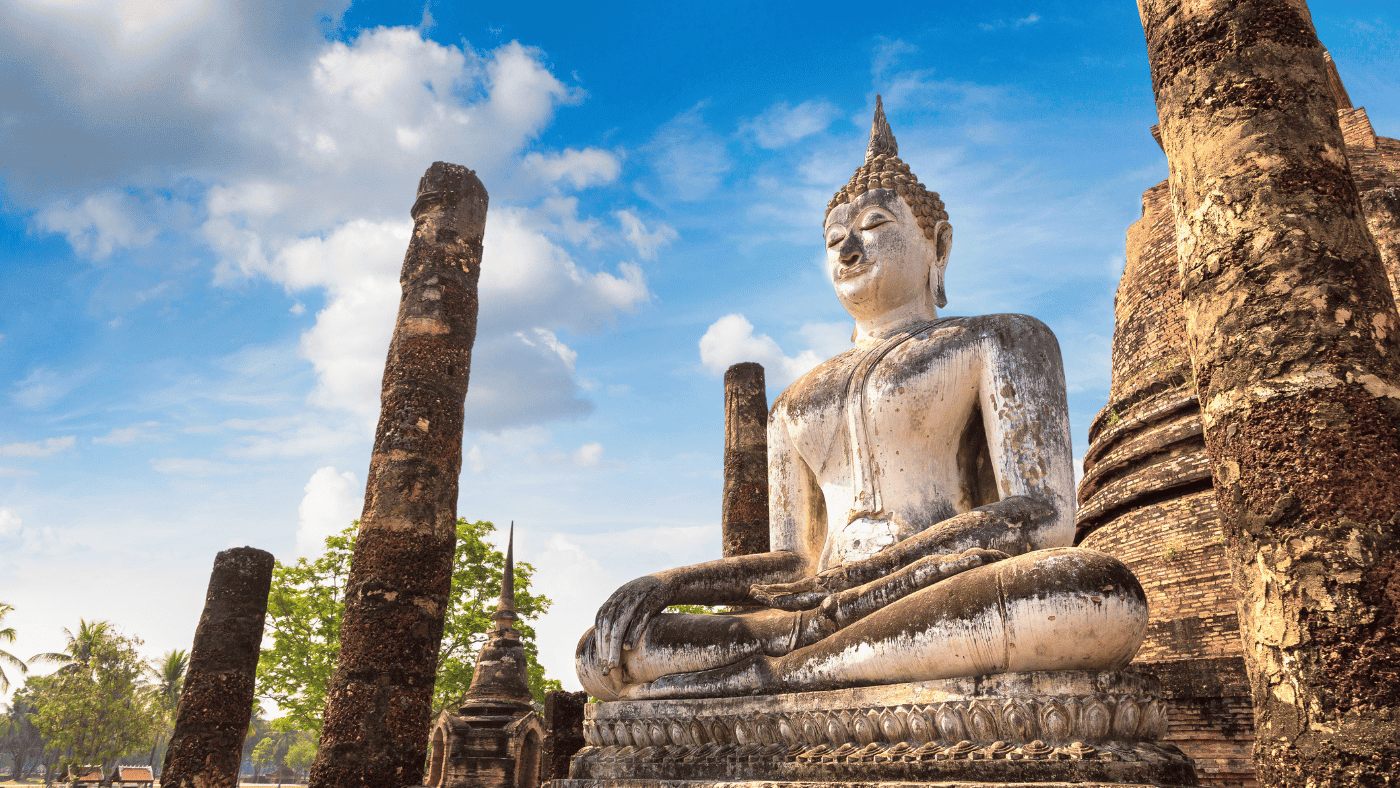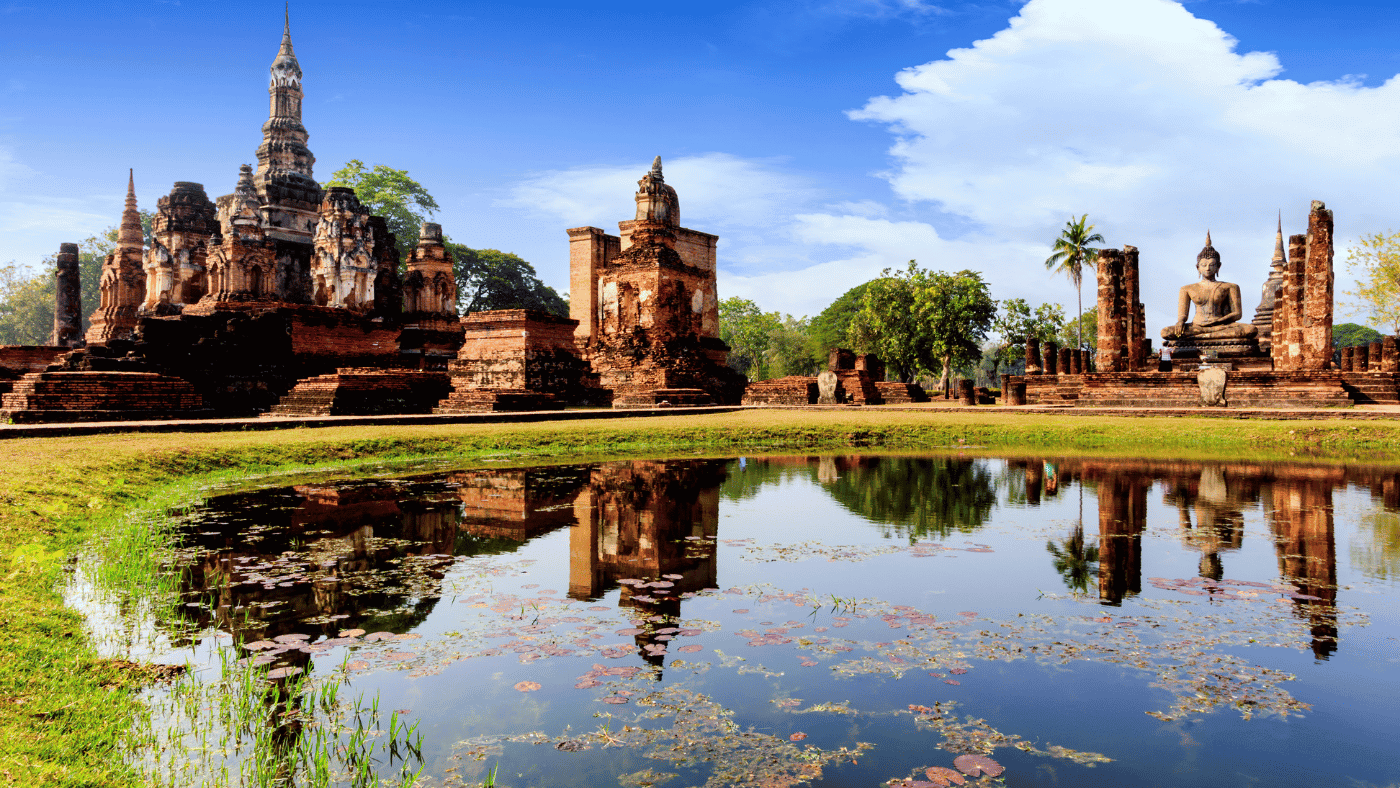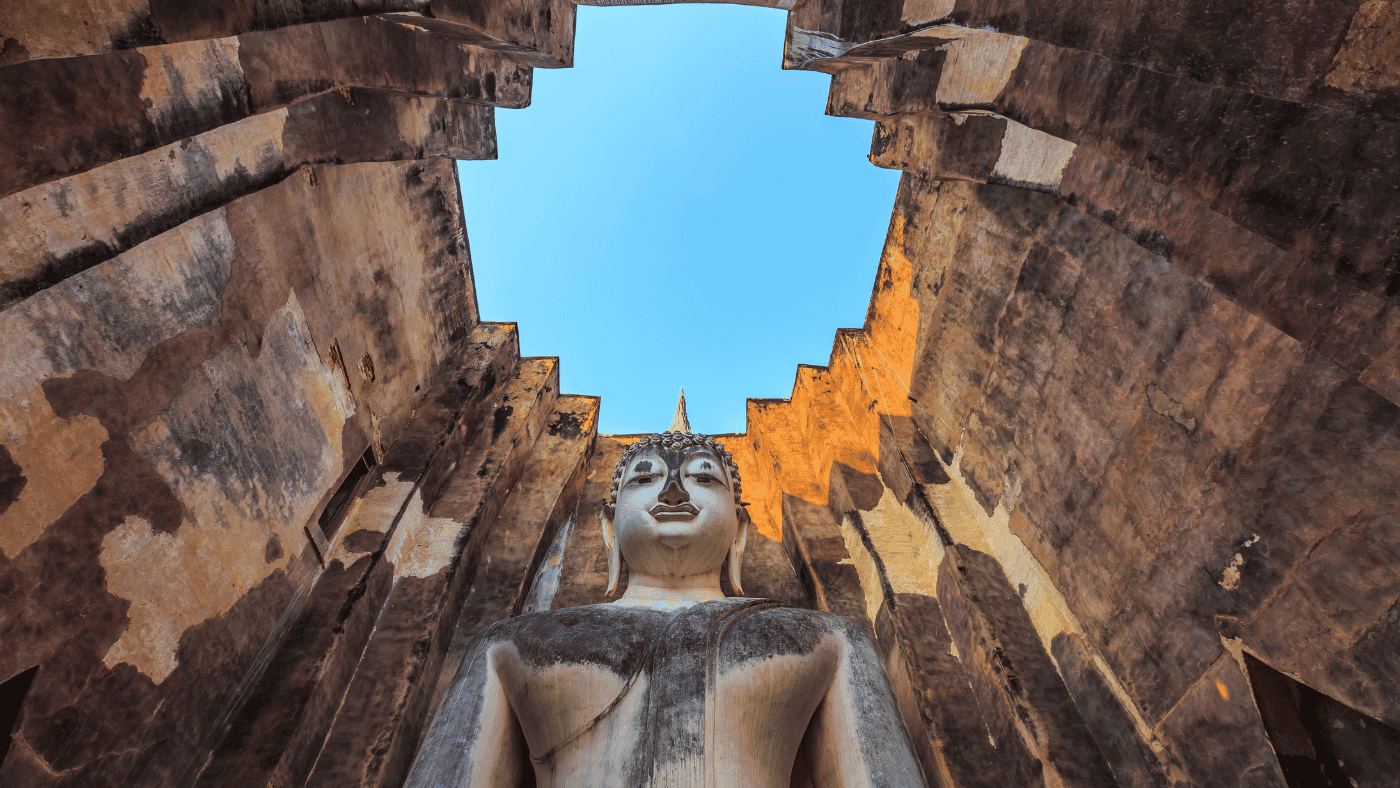Sukhothai is a fascinating place to discover the rich history of Thailand. Sukhothai Historical Park is a UNESCO World Heritage site and is located in the north-central region of the country. This ancient city served as the capital of the Sukhothai Kingdom from the 13th to the 15th century. The ruins of this once-glorious city are preserved in the park, making it a must-visit destination for history lovers, and anyone eager to explore the splendors of Thailand.
A Brief History of Sukhothai Historical Park

The Sukhothai Kingdom rose to power in the 13th century, led by King Ramkhamhaeng. The Sukhothai Kingdom was established after the Khmer Empire had fallen, and that’s when Sukhothai started to emerge as a political center. It became a hub of trade, cultivation, and craft production. The kingdom also played a vital role in the development of Theravada Buddhism.
The Rise of the Sukhothai Kingdom
The Sukhothai Kingdom was considered the golden age of Thai history. It was founded on the principles of Buddhist ideology, and this philosophy played a massive role in shaping the administration and governance of the Kingdom, so much so, it is known as the Sukhothai-style of governance. The King developed irrigation systems that paved the way for agricultural activities. The people of Sukhothai Kingdom also mastered several crafts such as pottery, textiles, jewelry, metalwork, and nut carving which was appreciated worldwide back then.
The Golden Age of Sukhothai
The reign of King Ramkhamhaeng is considered the Golden Age of Sukhothai. During his reign, the kingdom saw rapid growth in various sectors. He fostered a system of governance that was based on the Buddhist philosophy of fairness and compassion. It was during his reign, that literature, art, architecture, and crafts flourished in Sukhothai. The art and architecture of this period are still seen in the ruins of the temples and monuments that are found in the Historical Park.
The Decline and Fall of Sukhothai
As the Kingdom grew bigger, it was difficult to manage, and the central authority weakened. Consequently, Sukhothai lost its importance in the latter part of the 14th century, and Ayutthaya took its place. Economically and politically, Sukhothai waned, and that led to the fall of the Kingdom eventually. It wasn’t until the 19th century that Thai archaeologists began excavating and preserving the ancient ruins, and in 1976, the Sukhothai Historical Park was established to preserve this beautiful heritage of Thai history.
Planning Your Visit to Sukhothai Historical Park

Best Time to Visit
The best time to visit Sukhothai Historical Park is between November and February when the weather is pleasant and dry. The hot season starts in March and ends in June while the rainy season starts in July and ends in October. The rainy season can get a bit too extreme, making it challenging to explore outdoor areas.
Getting to Sukhothai Historical Park
Sukhothai Historical Park is accessible through Bangkok by air, rail, or bus. Air travel is the most comfortable and time-saving option. There are daily flights from Bangkok to Sukhothai, and the duration of the flight is approximately 70 minutes.
Entrance Fees and Guided Tours
The entrance fee to the Sukhothai Historical Park is 100 Thai baht (USD 3) per person, per day. Guided tours are also available within the park, but you can explore the area on your own if you wish.
Must-See Temples and Monuments

Wat Mahathat
Wat Mahathat is a temple that used to be a grand and impressive structure. It was once the center of the religious community of Sukhothai. It has several stupas, prayer halls, and a grand Buddha statue- a must-visit for any temple enthusiast.
Wat Si Chum
Wat Si Chum is one of the oldest and largest temples in Sukhothai. Located in the northern zone of the Historical Park, it is known for its 15-meter tall standing Buddha statue, which is also known as Phra Achana. The statue was carved directly from the rock inside the temple, and it attracts thousands of visitors every year.
Wat Sa Si
The Wat Sa Si is a temple that’s located right in the heart of Sukhothai. It is surrounded by a beautiful lotus pond, which reflects the beauty of the structure. The temple is known for its magnificent 12-meter tall stupa called Cetiya and its impressive collection of Buddha statues.
Wat Phra Pai Luang
Wat Phra Pai Luang is the most photogenic temple in Sukhothai. It is surrounded by a moat that serves as a natural defense for the temple. The temple itself has unique and intricate architecture, and it houses a collection of Buddha statues.
Exploring the Five Zones of Sukhothai Historical Park

Central Zone
The central zone is by far the most extensive of the five, and it contains some of the most significant ruins of the ancient city. The central zone is the main entrance point to Sukhothai Historical Park, and it is where you’ll find the park museum.
North Zone
The North Zone of Sukhothai Historical Park has several temples to explore, including Wat Chang Lom, Wat Sa Si, and Wat Phra Phai Luang. This zone is known to have remains of ancient palaces, and it offers breathtaking views of the mountains.
West Zone
The West Zone is small but it’s home to several sites of historical importance, including Wat Chetupon, Wat Traphang Thong, and Wat Saphan Hin. The architecture of these temples oozes character and charm, and they gradually lead to the massive boulder that houses the iconic Phra Attharot Buddha statue.
South Zone
The South Zone of Sukhothai Historical Park has several temples to explore, including Wat Mae Chon and Wat Sra Sri. It is known for its impressive water features and stunning views of the surrounding mountains.
East Zone
The East Zone of Sukhothai Historical Park is the smallest of all the zones, and it is relatively less crowded. It has several ruins of ancient temples such as Wat Ratchathani and Wat Suan Kaew. The East Zone is perfect for a peaceful and undisturbed exploration of the old city.
Conclusion
Sukhothai Historical Park offers an opportunity to take a trip back in time to explore the cultural heritage of Thailand. Each temple has its own unique story, and the architecture is awe-inspiring. The park is well-preserved, and it makes for a great place to enjoy your time and learn about Thai history simultaneously. Make sure you plan your visit to Sukhothai Historical Park to experience a unique and breathtaking adventure that you will never forget.

